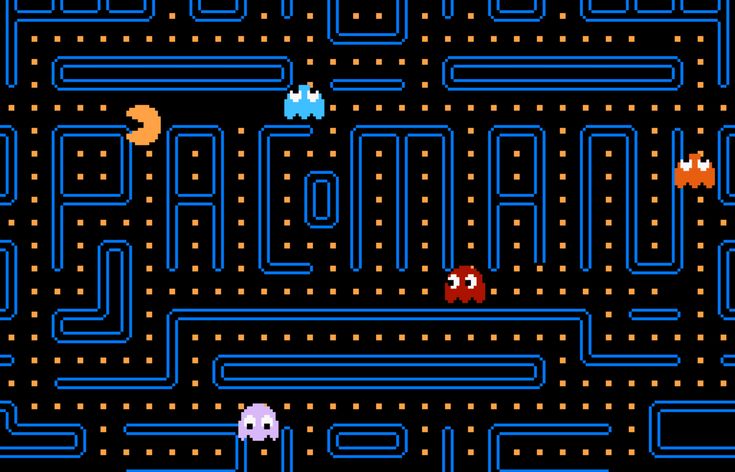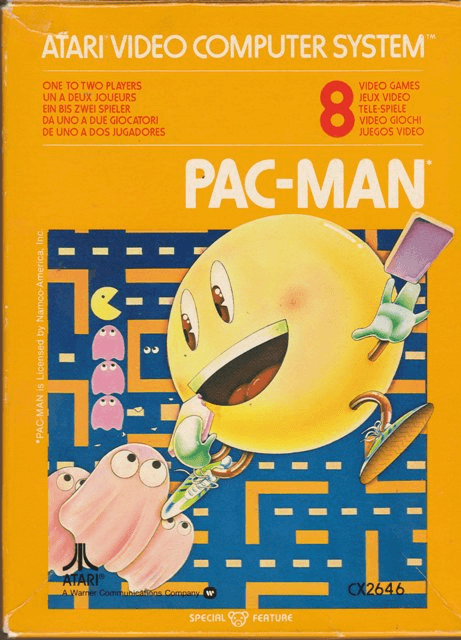Pac-Man stands as a testament to creativity and innovation in the gaming industry, marking a pivotal shift from niche entertainment to mainstream cultural phenomena. On this blog post, we will explore the humble beginnings, design innovations, cultural impact, and lasting legacy of Pac-Man, offering a comprehensive look at its journey from a simple arcade game to an enduring global icon.
The Beginnings of Pac-Man
Pac-Man was conceived during a time when arcade games like Space Invaders and Asteroids dominated the market. In 1979, Namco tasked Toru Iwatani, a young game designer, with creating a game that would stand out from the crowd. Noticing that most games targeted young men and were centered on violence or competition, Iwatani envisioned a non-violent game that could appeal to women and families.
Inspired by a pizza with one slice missing, Iwatani designed Pac-Man as a circular character with a mouth. The concept was tied to the universal act of eating, which he believed would resonate with a wide audience. Development began in early 1979, and after 18 months of work, the game was ready for release in Japan on May 22, 1980.

The Gameplay Revolution
Pac-Man introduced a groundbreaking maze-chase gameplay style. Players controlled a yellow character navigating mazes, eating pellets, and avoiding four colorful ghosts: Blinky, Pinky, Inky, and Clyde. Each ghost had a unique AI, adding strategic depth. Blinky aggressively chased Pac-Man, Pinky tried to cut him off, Inky acted unpredictably, and Clyde alternated between chasing and fleeing.
The game’s genius lay in its simplicity and accessibility. Players could quickly understand the objective, yet the game offered enough complexity to keep them coming back. It was also one of the first games to introduce power-ups. By eating a power pellet, Pac-Man could turn the tables, consuming the ghosts for bonus points. This mechanic created moments of thrilling empowerment for the player.
Pac-Man Fever: A Cultural Phenomenon
Within a year of its release, Pac-Man became an international sensation, earning billions in quarters at arcades worldwide. By 1981, Pac-Man Fever was sweeping the globe, with the game being played by an estimated 30 million people in the United States alone. This enthusiasm extended beyond gaming. Buckner & Garcia’s hit single “Pac-Man Fever” reached the Billboard Top 10, and in 1982, Hanna-Barbera produced a Pac-Man cartoon.
Pac-Man also became a merchandising juggernaut, with toys, lunchboxes, and even a board game ensuring the character’s presence in everyday life. The simplicity of Pac-Man’s design—his bright color and friendly appearance—made him an ideal mascot for Namco and one of gaming’s first true celebrities.
Expanding the Pac-Man Universe
Namco recognized the potential to expand Pac-Man’s universe early on. In 1982, an unauthorized modification of the original game became Ms. Pac-Man, introducing new mazes and faster gameplay. Though initially unlicensed, Ms. Pac-Man quickly gained official recognition and became one of the most popular games of the 1980s.
Sequels and spin-offs followed, including Pac-Land (1984), a side-scrolling platformer that influenced future platform games like Super Mario Bros., and Pac-Man Championship Edition (2007), which brought modern flair to the classic formula. These iterations kept the franchise alive while introducing Pac-Man to new generations.

Conquering Consoles and Beyond
Pac-Man was among the first arcade games to be adapted for home consoles. The Atari 2600 version, released in 1982, sold millions of copies but faced criticism for its poor quality. Despite this, it was a watershed moment that highlighted the demand for home gaming experiences.
Over the decades, Pac-Man has appeared on virtually every major gaming platform, from the NES and PlayStation to smartphones and VR devices. Each adaptation preserved the essence of the original while leveraging new technology to enhance the experience.

Innovations and Industry Records
Pac-Man revolutionized the gaming industry with its pioneering features. It was the first game to include cutscenes, providing charming narrative interludes. It also introduced gaming’s first mascot, paving the way for iconic characters like Mario and Sonic.
Pac-Man holds multiple Guinness World Records, including the title of the most successful coin-operated game. The highest achievable score—3,333,360 points—remains a benchmark for competitive players, showcasing the game’s enduring appeal.
Pac-Man’s Legacy
Pac-Man’s influence extends far beyond gaming. It inspired countless imitators and laid the groundwork for character-driven games. Titles like Frogger, Lady Bug, and even Donkey Kong owe their success in part to the trail blazed by Pac-Man.
Moreover, Pac-Man demonstrated that video games could appeal to a universal audience, challenging the stereotype that gaming was exclusively for young men. Its success opened doors for more diverse game development and storytelling.
Pac-Man’s timeless appeal lies in its simplicity, universality, and adaptability. The core gameplay remains as engaging today as it was in 1980, and the character’s cheerful demeanor continues to captivate audiences. From Google Doodles to IRL recreations like Pac-Manhattan, the game’s influence persists across generations.
As gaming evolves, Pac-Man remains a reminder of its humble beginnings and the boundless creativity that defines the medium. For over four decades, Pac-Man has been more than just a game—it’s a symbol of innovation, inclusivity, and joy.
